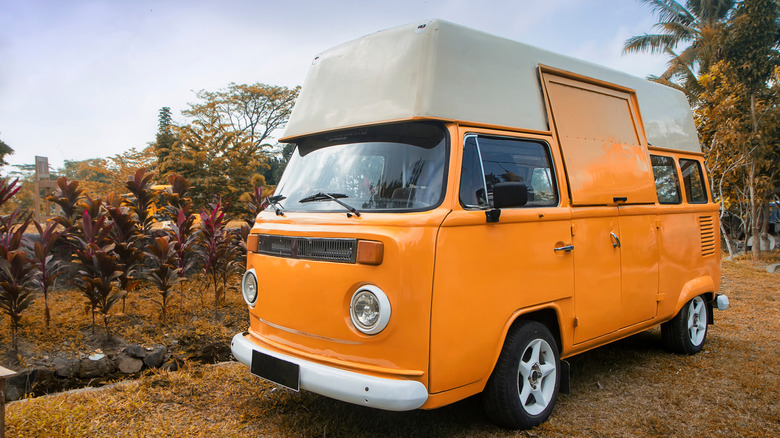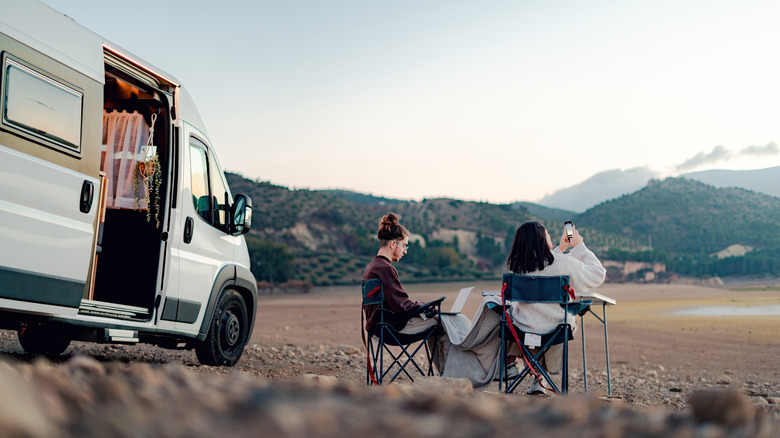This Camper Van Parking Rule Must Be Considered When Reserving Campsites For A Road Trip
If you're road-tripping in a camper van (think the smallest Class B type), you might think you can pull into just about any campsite and call it a night. But many travelers have learned the hard way that not all campsites are created equal — especially when it comes to where they fit in between tent sites and RV sites.
The confusion usually starts with campground booking platforms like Recreation.gov or ReserveAmerica, which often split sites into categories like tent-only, standard nonelectric, and RV. But here's the catch: tent-only doesn't necessarily mean you can park your camper van in the spot and sleep inside. At some popular campgrounds (including several in Yosemite National Park), these sites are restricted to ground tents, with rules explicitly stating that sleeping in your vehicle is not permitted. You should also know the difference between walk-in and walk-up campsites. A walk-in means you'll have to carry your stuff in from a separate parking area. Walk-up means it's first-come, first-served, with vehicles often allowed.
So, what's the solution? While there may be the occasional situation where your smaller-sized van is waved over to the tent area, you can't always be sure. To avoid any issues, book an RV site or a standard site that clearly states vehicle camping is allowed — even if you don't need hookups. It's also a good idea to call ahead to double-check, especially in national or state parks where rules can vary widely. Otherwise, you might show up with the perfect sunset view and no place to legally sleep.
Tips to avoid common camper van site mix-ups
While today many people are making the switch to full-time vanlife, most national park campgrounds were built long before camper vans became a thing — and many still don't know where to place them. You'll often be forced to choose between tent-only and RV-only sites, neither of which quite fit. So, be sure to check the parking pad dimensions listed for each site (if available). A short site or one marked walk-in probably won't work for overnighting in your van.
That said, not every park is confusing. In places like Colorado's Ridgway State Park or Utah's Dead Horse Point State Park, you'll come across sites that accommodate both tents and vans — no issue at all, as long as you fit in the space. And many RV spots in campsites allow one vehicle and one tent, so that can work for you if you're traveling with a group and need a combination option. Insider trick: If you really want that tent-only site for the view or location, some vanlifers pack a small tent to pitch next to their van (even if they sleep inside). It's not a universal loophole, but at a few campgrounds, it's enough to satisfy the rules — just don't tell them we told you.
It's also worth mentioning that some national parks have banned RVs in certain areas. That means your camper van, even if it's small, has to stay in the parking lot no matter what. Ultimately, booking a site for a camper van doesn't have to be a gamble. With a little research, you'll save yourself a lot of late-night stress and ensure you end up exactly where you want to be: parked, legal, and soaking up the scenery.

